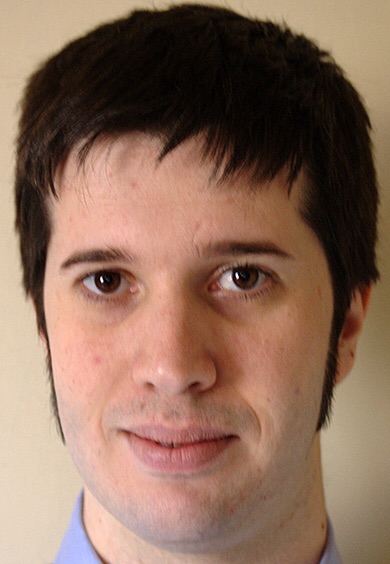ENGINEERING
Red Hat partners with Discovery Park

Purdue University and Red Hat are collaborating to create a two-year doctoral research position for Discovery Park's Research Center for Open Digital Innovation.
The Red Hat Doctoral Researcher in Open Innovation Communities, made possible through Red Hat's $100,000 gift to Purdue, is designed to advance research efforts led by technology and innovation professor Sabine Brunswicker, who directs the Research Center for Open Digital Innovation (RCODI) at Purdue.
Albert Armisen, who is pursuing a doctorate degree in management science at the ESADE Business School in Spain, has been selected as the first Red Hat Doctoral Research Fellow in Open Innovation Communities.
"By funding this research position, Red Hat will establish itself as a significant catalyst of open-digital innovation ecosystems and communities research intended to answer questions critical to sustainable impact of open standards and open-source and novel open forms of innovation and production in a broader sense," Brunswicker said. "The patterns of open source can be found beyond software and sectors like telecommunications, health care or agriculture."
Through the fellowship Armisen plans to research the governance of heterogeneous open-innovation communities, including OpenStack, Open Shift and the Fedora Project, as well as the design of open cloud-based product and service architectures. Research results will be shared with Red Hat as part of a collaborative dialogue between these two groups, Brunswicker said.
"By funding the Red Hat Doctoral Researcher in Open Innovation Communities, we can initiate scientific research designed to resonate specifically with challenges, idiosyncrasies and opportunities of open innovation and the open digital ecosystems forming around them," said Tom Callaway, who leads University Outreach at Red Hat.
The research through the RCODI's doctoral fellowship also complements a new internal Red Hat project on the design of the technical framework architecture, and the recruiting and operational management of business relationships within the telecommunication system, Callaway said.
Open digital innovation acknowledges that innovation and value creation have become an open and distributed phenomenon.
No longer confined to organizations with clear-cut boundaries, manifold collective and distributed forms of innovation and value creation have emerged in which multiple actors share data and knowledge, and jointly develop novel solutions, Brunswicker said.
"In open digital innovation, digital technologies are transforming the distributed process of innovation and have paved the way for novel generative and evolutionary product and business architectures," she said.
The field owes its prevalence in part to Henry Chesbrough, executive director of the Center for Open Innovation and faculty director of the Garwood Center for Corporation Innovation in the Haas School of Business at UC-Berkeley. The concept builds on a concept from the 1960s when companies would expand their cooperative efforts through research and development, coupling external input with internal ideas for advancing their technology or innovative process and services.
Research already conducted by Brunswicker in partnership with Chesbrough shows that open innovation is not a passing trend. In March through April 2014, they surveyed 125 large firms in Europe and the United States with annual sales exceeding $250 million. Their purpose was to examine the extent to which large firms are now practicing open innovation. Of the 78 percent who reported practicing open innovation, none had abandoned it at any point, and 82 percent of those practicing reported that it is practiced more intensively today than it was three years ago.

